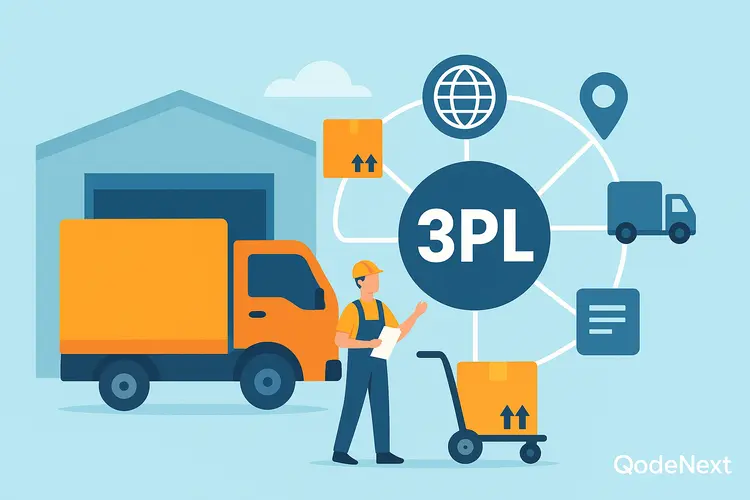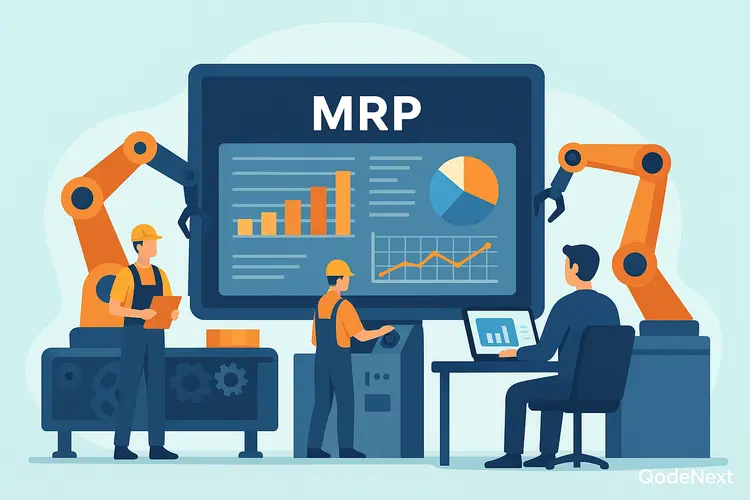Seamless operations are essential for business success in the eCommerce industry. Whether order fulfilment, shipping, or customer service, every aspect of online retail must function efficiently. This is where a service-level agreement (SLA) plays a crucial role. It sets clear expectations, defines responsibilities, and ensures service providers meet agreed-upon performance metrics.
This blog explores the importance of service level agreements, their key components, benefits, and how they impact various eCommerce operations.

Understanding a Service Level Agreement (SLA)
A service level agreement is a formal contract between an eCommerce business and its service providers. It outlines the quality, availability, and responsibilities of the services provided. These agreements can exist between businesses and logistics providers, payment processors, cloud hosting services, or even customer support teams.
Types of Service-Level Agreements in eCommerce
Here are the different agreement types:
- Customer Service Level Agreement – It covers agreements between the eCommerce business and its customers regarding response times, return policies, and delivery guarantees.
- Service-Based SLA – It focuses on specific services such as website uptime, payment processing, or warehouse management.
- Vendor-based SLA: This defines expectations between the eCommerce business and third-party vendors, such as suppliers, logistics providers, or software platforms.
Key Components of a Service Level Agreement
A well-defined service level agreement should include the following:
1. Service Scope
Defines the services covered under the agreement, such as order processing, shipping, or IT support.
2. Performance Metrics
Specifies measurable indicators such as:
- Order fulfillment rate
- Delivery time adherence
- Customer service response times
- Website uptime percentage
3. Roles and Responsibilities
Clearly outlines who is responsible for what, ensuring accountability across all parties.
4. Issue Resolution and Penalties
Details the procedures for handling service failures and penalties for non-compliance.
5. Reporting and Monitoring
Defines how service performance is tracked and reported, including frequency and reporting tools.
6. Termination Clause
Provides guidelines for contract termination, ensuring fair exit terms for both parties.
Benefits of Implementing a Service Level Agreement in eCommerce
Here are the benefits listed below:
1. Enhances Customer Experience
A service level agreement ensures that customers receive their orders on time, receive prompt support, and enjoy a seamless shopping experience.
2. Improves Operational Efficiency
With predefined metrics, eCommerce businesses can track performance and make data-driven improvements.
3. Strengthens Vendor Relationships
SLA fosters trust and accountability between businesses and vendors, ensuring reliable service delivery.
4. Reduces Risks and Disputes
Clearly defined SLAs help avoid misunderstandings, reducing legal and financial risks.
5. Ensures Compliance
Many eCommerce businesses operate in highly regulated industries. SLAs ensure compliance with industry standards and legal requirements.
Challenges in Managing SLAs in eCommerce
Despite their benefits, managing SLAs can be complex. Some common challenges include:
1. Changing Customer Expectations
- ECommerce is constantly evolving, and customer demands shift over time. Businesses must ensure that SLAs remain relevant and adaptable to these changes without compromising service quality. The increasing demand for same-day deliveries, personalized customer experiences, and flexible return policies has made it challenging to set realistic SLA benchmarks that consistently meet customer expectations.
2. Vendor Performance Issues
- Many eCommerce businesses rely on third-party logistics providers, payment gateways, and IT support. Ensuring that external vendors adhere to SLA terms can be difficult, especially when they face operational disruptions.
- Vendor delays, inventory shortages, or service outages can have a domino effect on the overall eCommerce experience, making SLA enforcement challenging. Businesses must have contingency plans in place to address vendor non-compliance and mitigate potential service failures.
3. Tracking and Reporting Difficulties
- Proper SLA monitoring requires advanced analytics and reporting tools. Without automated systems, tracking performance metrics such as response times, order fulfilment rates, and system uptime can be cumbersome.
- Many eCommerce businesses still rely on manual tracking methods, leading to errors, inefficiencies, and delayed issue resolution. Implementing AI-powered dashboards and real-time monitoring tools can help businesses proactively manage SLAs and identify service gaps before they escalate.
4. Legal Complexities
- Drafting and enforcing SLAs require legal expertise to ensure that all clauses are fair, enforceable, and compliant with industry regulations. Misinterpretation of contract terms can lead to disputes.
- Moreover, in global eCommerce operations, SLAs must align with different legal frameworks, tax regulations, and compliance requirements across various regions. This makes SLA formulation a legally intricate process, requiring regular audits and updates to avoid contractual disputes.
5. Scalability Concerns
- As eCommerce businesses grow, their service requirements change. SLAs must be scalable to accommodate increased order volumes, new markets, and emerging technologies without compromising efficiency. A rigid SLA structure can hinder growth, leading to operational bottlenecks. Businesses must adopt flexible SLA frameworks that evolve alongside their expansion plans, technological advancements, and shifting market trends.
Best Practices to Adopt Service-Level Agreements
Here are the best practices to implement the best agreement e-commerce solutions:
1. Set Realistic and Achievable Goals
Ensure that SLA commitments align with operational capabilities and industry benchmarks. Unrealistic SLAs can lead to dissatisfaction and frequent breaches.
2. Regularly Monitor Performance
Use analytics and reporting tools to track SLA compliance. Establish a review process in which service performance is periodically assessed to identify trends and make necessary adjustments.
3. Maintain Flexibility
Adapt SLAs to reflect market changes, technological advancements, and customer feedback. Evolving expectations and innovations should be incorporated into the agreement to maintain relevance.
4. Communicate Clearly with Stakeholders
Regularly update customers, vendors, and internal teams on SLA performance and improvements. Transparent communication helps in setting the right expectations and fosters a culture of accountability.
5. Implement Automation Tools
Leverage AI-powered chatbots, automated tracking systems, and real-time dashboards for SLA monitoring. Automating compliance tracking can help in reducing errors and improving efficiency.
6. Define a Strong Issue Resolution Process
SLAs should include a clear process for handling service failures, disputes, and escalations. Establishing a structured resolution framework ensures quick response times and minimizes disruptions.
7. Train Employees on SLA Compliance
Ensure that all relevant teams understand the SLA terms and their role in maintaining compliance. Regular training sessions can help in fostering a service-oriented approach across the organization.
8. Conduct Periodic SLA Audits
Regularly review and audit SLAs to assess effectiveness. Make necessary modifications based on performance reports, emerging industry trends, and feedback from stakeholders.
FAQs – Service Level Agreements in eCommerce
What is a service level agreement in eCommerce?
A service level agreement ensures clear expectations, accountability, and consistency in service delivery, enhancing customer satisfaction and operational efficiency.
Who needs an SLA in eCommerce?
ECommerce businesses, logistics providers, payment processors, IT service providers, and customer support teams all benefit from SLAs.
What happens if an SLA is not met?
Non-compliance can result in penalties, service credits, or contract renegotiation, depending on the terms outlined in the SLA.
Can SLAs be modified?
Yes, SLAs should be reviewed periodically and adjusted to align with changing business needs and market trends.
How can businesses ensure SLA compliance?
Regular performance monitoring, clear communication, and implementing automation tools can help ensure compliance with SLAs.
Conclusion
A well-structured service level agreement is essential for eCommerce success. It helps businesses maintain service quality, meet customer expectations, and ensure smooth vendor relationships. By setting clear performance metrics, tracking compliance, and adapting to market changes, eCommerce businesses can optimize operations and sustain long-term growth.
Implementing and managing SLAs effectively can be the difference between an efficient, customer-friendly eCommerce operation and one plagued by delays and disputes. Do you want to implement a reliable and scalable supply chain business model? Get in touch with Qodenext today.







